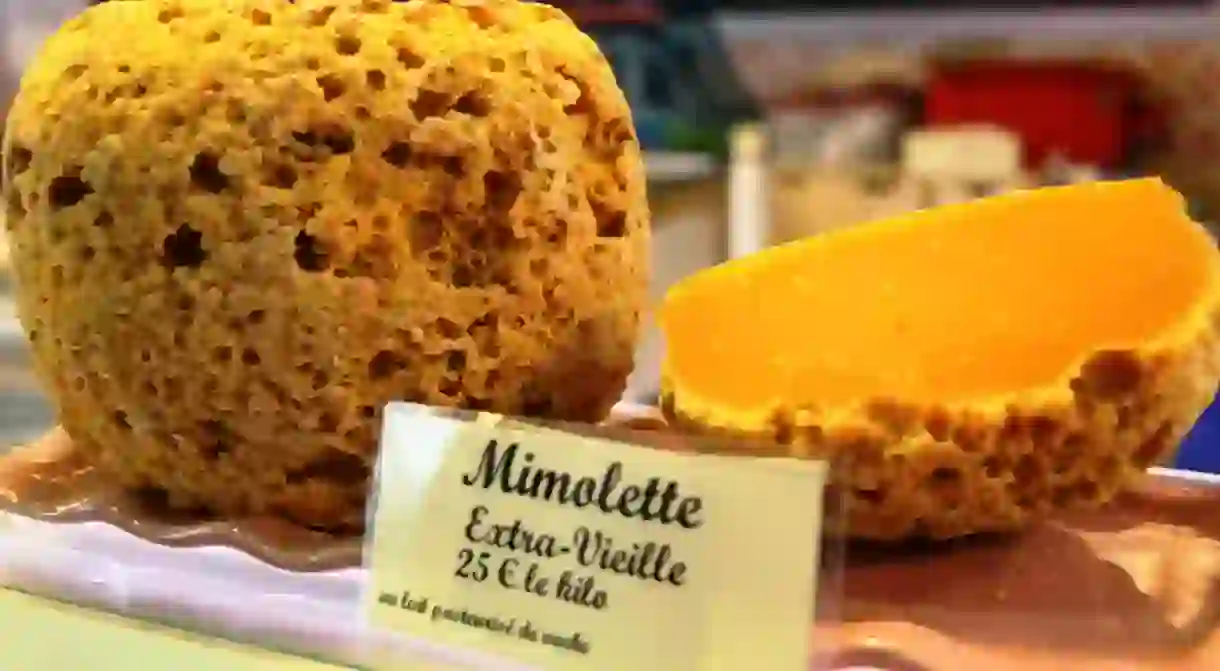Fancy Cheeses That Are Illegal In The US

Aged cheddar, creamy Brie, stinky goat. There’s nothing more pleasing to the soul than a slice of ooey-gooey cheese. But some of the world’s most popular cheeses – the kind that the people in France and Italy enjoy – don’t make their way across American borders. The FDA’s strict rules on production and import have ordered a list of strangely unique cheeses, ones that are unpasteurized and usually aged less than 60 days, illegal in the US.
Casu Marzu
Most Americans would cringe at the sight of live maggots crawling through a wheel of pecorino in the fridge. In Sardinia, Italy, it’s rather accepted. Casu Marzu, meaning ‘rotten or putrid cheese,’ is a traditional cheese made from sheep’s milk. After fermentation, a hole is cut in the top of the cheese, and it’s placed outdoors where it awaits Piophila casei, a species of cheese fly. The flies settle inside, lay eggs, and produce larvae. The larvae eat the cheese and leave behind excretions of pre-digested fats, proteins, and sugars – the cause for its distinct flavor. Should you find yourself in a European cheese shop, expect to see these insects digging around inside.

Mimolette
Cheese mites are fairly common during the cheese making process – these microscopic creatures love the cool, damp atmosphere in which cheeses are aged. Some hard cheeses are treated to deter these microorganisms, but Mimolette – like soft cheeses Comté and Cantal – welcomes the insects. Produced in Lille, France, the cheese is taken to a special room after one or two months of aging where it’s introduced to the mites. They eat the cheese and burrow through the crust, creating a dense cheese with a sweet and salty flavor. The FDA recently banned Mimolette from the US, declaring it a health hazard and potential allergen.

Brie de Meaux
While the Brie found in the US is delicious, it’s not the real deal. Traditional ‘Brie’ in France, named for the region it comes from, is a creamy cheese made from cow’s milk. But what makes French Brie different is that it is raw (or unpasteurized). The FDA requires that Brie coming from Europe must be heated as part of the process of sterilization before being sold in stores.

Epoisses
Epoisses was first produced by monks at the Abbaye de Citeaux, a church south of Dijon, France. Two local Bourguignon families began producing Epoisses in the late 1940s, and shortly after, it became one of the most popular cheeses in France. It is also considered one of the most fascinating. Creamy, rich, and powerful, this orange-tinged beauty is pungent, raw and is usually washed in Marc, a fermented grape wine. While the raw version can only be found outside the country, pasteurized versions are sold in the US.

Reblochon
Some say the origins of Reblochon can be traced back to the 13th century when herdsmen in the Savoie region of France supposedly refrained from fully milking their cows to avoid paying taxes. After payment had been made, they went back to ‘remilk’ the cows, which yielded a fatty milk, one used to make Reblochon. But you will not find this semi-soft, raw cheese anywhere in the US. The FDA banned it in 2004 for falling short of the required aging time (it’s traditionally aged for just 50 days).

Loire Valley Raw Goat’s Milk Cheeses
The Loire Valley is especially famous for its cheeses, some crowned with the prestigious AOP title – including the raw goat’s milk cheese Sainte-Maure-de-Touraine. Americans, however, are not fortunate enough to have access to this one in the US. Because these cheeses are made with raw milk, they have been banned by the FDA.

Camembert de Normandie
We all know Camembert: that soft, creamy, and mildly stinky slice of delight found on nearly every cheese platter. But what we don’t know is this isn’t the real version. The one sold in France is aged less than 60 days, but we have yet to see it in the raw form in the US: the one sold in grocery stores and cheese shops is pasteurized.














